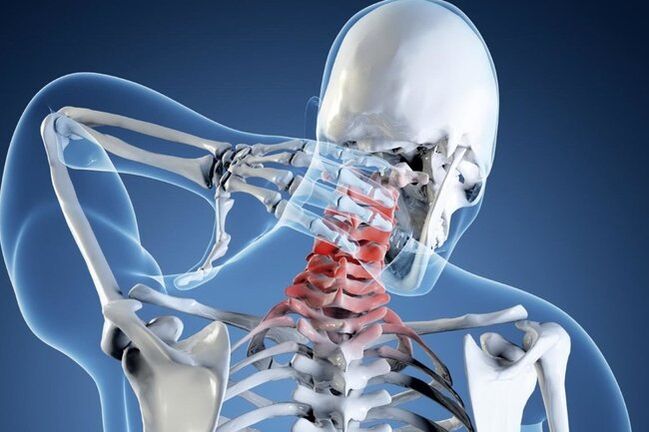
Osteochondrosis is a complex of pathological anatomical and functional disorders associated with distributing changes in intervertebral discs.This condition develops slowly and with timely intervention, good results can be achieved using simple conservative measures.
The causes and symptoms of the osteochondrosis of the cervical column
The vertebrae of the cervical region experience an increase in load associated with the mobility of the neck and head.The anatomy of this segment contributes to the risk of displacement of vertebrae with acute or atypical movements of the head, and a weak muscle corset does not protect the column from the damage. The causes of the osteochondrosis of the cervical column have not been finally studied, and the course is asymptomatic in most cases.This leads to the fact that most patients seek medical help quite late.The development of osteochondrosis leads to:
- deteriorated posture, instability of column structures;
- lesions, connective tissue dysplasia;
- genetic predisposition;
- Sedentary work or be in a forced position for a long time, the lack of sufficient physical activity;
- Unstable nutrition, lack of vitamins and elements trace in the diet.
Degenerative changes in ligaments and cartilage become the cause of the compression of nerve arteries and trunks, causing cerebral circulation and pain disorders.The characteristic symptoms of this state are easy to recognize.
- Painful sensations in the neck, neck, shoulders.By bowing or turning your head, you can listen to a characteristic crunchy sound.Traction pains can be given to the thoracic region, there is a fourth sensation among the shoulder blades.
- The feeling of loss of strength, insomnia, chronic fatigue and frequent headaches.With cervical osteochondrosis, headache is concentrated in the occipital region and gives the side parts of the neck.
- By bowing the head, a feeling of numbness of the hands, fingers can occur.
- Chest pain, nausea, dizziness.
Diagnostic and treatment methods of osteochondrosis of the cervical column
The diagnosis is made by an orthopedic doctor or neurologist based on an exam, radiography or computed tomography of the spine.If you suspect that a magnetic resonance will be required, a magnetic resonance will be required and evaluate functional circulatory disorders: reoenphalography and background study.
Conservative therapy includes symptomatic measures (pain elimination, anti -inflammatory therapy, antispasmodics), as well as the restoration of natural cartilage with medications.The supreme massage, physiotherapy, therapeutic exercises are also effective.
Prevention of the osteochondrosis of the cervical column
Regular physical activity and exercise to strengthen the muscle corset of the back effectively maintains the normal state of the spine structures.Daily gymnastics and control of neck and back positions during the workday help to normalize blood circulation, eliminate excess load in segments separate from the spine.
It is also necessary to monitor the variety of diets and prevent excess weight.Activate metabolic processes and eliminate muscle cramps helps a massage course, which must be repeated with a frequency of 2-3 times a year.



































